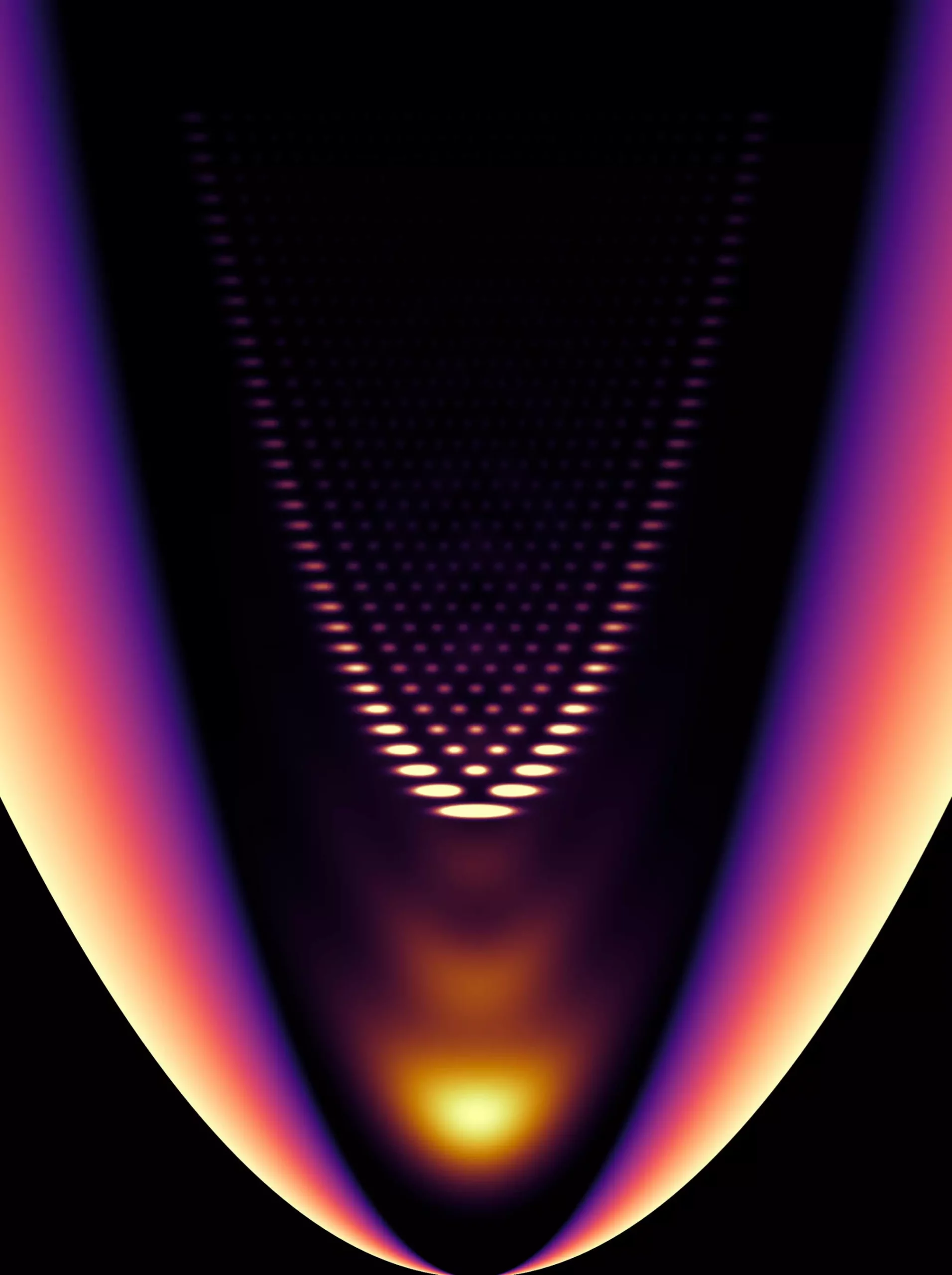Recent advances in quantum physics have unveiled remarkable insights into the behavior of gases composed of light, specifically photons. Researchers from the University of Bonn and the University of Kaiserslautern-Landau (RPTU) have successfully synthesized a one-dimensional gas out of these light particles, aiding in the exploration of several theoretical predictions surrounding this esoteric state of matter. The outcome of their experiment, published in a prestigious journal, Nature Physics, not only showcases an innovative approach to controlling photon behavior but potentially paves the way for future studies into quantum phenomena.
To elucidate the concept of gas dimensionality, consider a simple analogy involving water. Picture yourself at a swimming pool, contemplating the act of pouring in more water. When using a garden hose to direct a high arc of water into the pool, you might witness a brief rise in the water’s level at the point of impact. However, the water quickly diffuses across the pool’s vast surface area, minimizing any localized effect. In stark contrast, imagine filling a narrow gutter using the same method. The water jet generates a pronounced wave, unable to extend beyond the gutter’s boundaries, signifying a more pronounced response due to the constrained environment. As the gutter narrows, the resulting wave’s height increases, mirroring the behavior of gases as their dimensionality is constrained.
The researchers delved into whether a comparable principle could be applied to gases formed by photons, providing a unique perspective on quantum effects and transitions from higher to lower dimensional states.
Dr. Frank Vewinger, a key figure in this research endeavor, offers insight into the methodology used to achieve the one-dimensional photon gas. The experimental setup involved a minute container filled with a dye solution, excited by a laser to produce photons. These photons ricocheted between the container’s reflective walls and interacted with dye molecules, leading to a cooling process that ultimately facilitated the condensation of the photon gas.
A noteworthy aspect of this research arises from the innovative manipulation of the container’s reflective surfaces. Collaborating with Prof. Dr. Georg von Freymann’s research group at RPTU, the team employed a high-resolution structuring technique. Transparent polymers were applied to the reflective surfaces, resulting in microscale protrusions that effectively confined the photons, permitting a one-dimensional or two-dimensional behavior, similar to the constraints in the aforementioned water gutter analogy.
While investigating the properties of these one-dimensional photon gases, the researchers encountered significant differences from traditional two-dimensional gas behaviors. In two-dimensional settings, temperature plays a critical role during phase transitions, similar to how water freezes consistently at zero degrees Celsius. However, within a one-dimensional gas, thermal fluctuations take center stage, drastically affecting the gas’s behavioral characteristics.
Vewinger and his colleagues observed that, unlike in two dimensions, one-dimensional photon gases do not exhibit a well-defined condensation point. The fluctuations can disrupt the uniformity of the gas, leading to varied behaviors across segments of the system. This phenomenon results in a “smeared-out” transition, challenging preconceived notions about phase definitions developed through more conventional gas studies.
Implications for Future Research and Applications
This groundbreaking research not only expands theoretical understanding but potentially opens avenues for practical applications in quantum optics. The implications of uncovering the nuances of one-dimensional photon gases could influence various fields, such as quantum computing, where controlling light at the quantum level is paramount. By making minute adjustments to the structure of the polymer used in the study, researchers may further probe the dynamics at play during dimensional transitions.
As this is foundational research, scientists anticipate that their findings may lead to greater innovations in manipulating light and understanding quantum systems more profoundly. The study indeed acts as a springboard for further inquiry into phenomena that challenge our understanding of matter in extreme states.
The work being conducted at the University of Bonn and RPTU mirrors the relentless curiosity that defines scientific exploration. The creation of a one-dimensional photon gas opens a new chapter in quantum physics, melding theoretical complexity with experimental ingenuity. These findings invite the broader scientific community to further explore the dimension-defying behaviors of light, fostering an environment rich with potential for future discoveries. As researchers peel back layers of quantum phenomena, the mysteries of light and matter beckon – urging new minds to confront the challenges that lie ahead.

